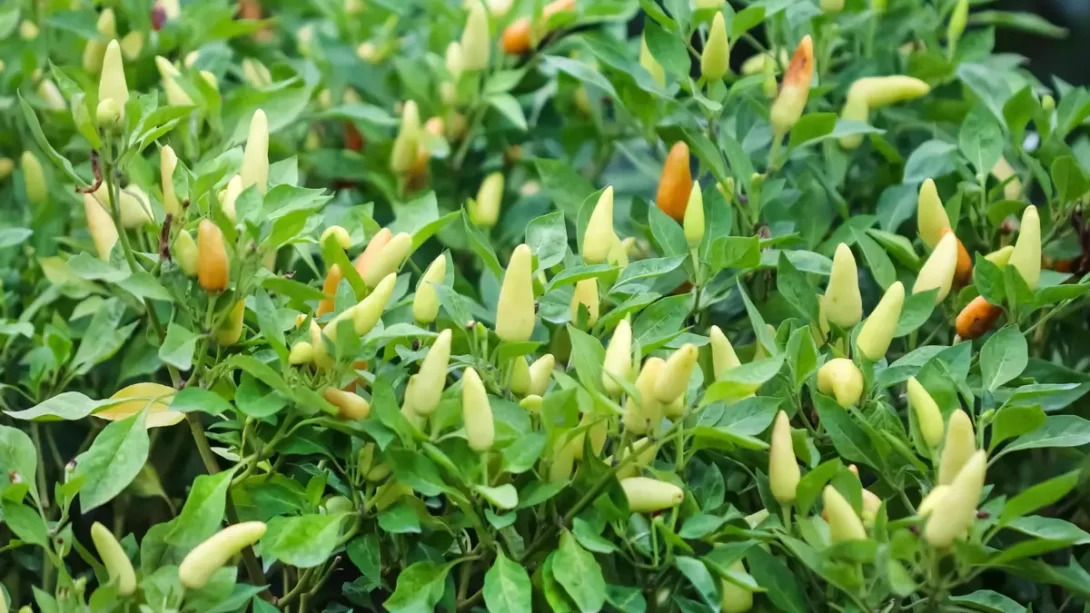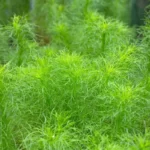Pepperoncini Peppers, belonging to the species Capsicum annuum, are a mild, sweet variety of chili peppers. Characterized by their wrinkled appearance and bright green color (which turns red as they mature), these peppers are a staple in Mediterranean cuisine. They are known for their slightly tangy and mildly spicy flavor, making them popular in salads, sandwiches, and as pickled condiments.
Originally from Italy and Greece, Pepperoncini Peppers have gained popularity worldwide. They are often harvested at different stages of maturity for varied culinary uses, from fresh eating to pickling.
Pepperoncini Growth Cycle
The growth cycle of Pepperoncini Peppers is crucial to understand for optimal harvesting. After planting, these peppers go through several stages: germination, seedling growth, flowering, and finally, fruiting. From planting to fruiting, the process can take approximately 60 to 90 days, depending on environmental conditions.
During their growth, the peppers change in size, color, and texture. This cycle is influenced by factors like temperature, sunlight, and soil conditions, which need to be carefully managed for a successful crop.
Ideal Conditions for Growing Pepperoncini Peppers
Pepperoncini Peppers thrive in warm, sunny environments. They prefer temperatures between 70°F to 85°F (21°C to 29°C) and require well-drained, fertile soil with a pH of 6.0 to 6.8. While these peppers are somewhat drought-tolerant, consistent moisture is important, especially during the flowering and fruiting stages.
Full sunlight is crucial for healthy growth. Pepperoncini plants should receive at least 6 to 8 hours of direct sunlight daily. Adequate spacing between plants is also important to ensure good air circulation and sunlight exposure.
Signs of a Ripe Pepperoncini Pepper
Identifying when Pepperoncini Peppers are ripe and ready for harvest involves observing several key indicators. The most obvious sign is the color change. Young Pepperoncini Peppers are a bright green color, which gradually transitions to a deeper red as they mature.
The size of the pepper is another indicator of ripeness. A typical Pepperoncini Pepper is about 2 to 3 inches long when ripe. The pepper should also feel firm but slightly give when gently squeezed. If the pepper is too soft, it might be overripe.
The Best Time to Pick Pepperoncini Peppers
The ideal time to harvest Pepperoncini Peppers depends on their intended use. For pickling or fresh eating when the flavor is milder and the peppers are more crisp, they should be picked while still green. This usually occurs about 75 to 80 days after planting. If a sweeter and more mature flavor is desired, allowing the peppers to turn red on the plant before harvesting is recommended, which may take a few weeks longer.
It’s important to regularly check the peppers as they approach maturity, as the transition from green to red can happen quickly. Harvesting at the right time ensures the best flavor and texture for your specific culinary needs.
Factors Influencing Harvest Timing
Several factors can influence when Pepperoncini Peppers are ready to be harvested:
- Climate and Weather Conditions: Warmer temperatures can accelerate the ripening process, while cooler weather can slow it down.
- Sunlight Exposure: Peppers that receive ample sunlight may mature faster than those grown in partial shade.
- Watering Practices: Consistent watering can promote steady growth and timely maturation, but overwatering or underwatering can affect the quality and timing of the harvest.
It’s important to consider these factors throughout the growing season to ensure a timely and successful harvest.
Harvesting Techniques for Pepperoncini Peppers
Proper technique is important when harvesting Pepperoncini Peppers to avoid damaging the plant and the fruit. Here are some tips for effective harvesting:
- Use Clean, Sharp Tools: A sharp pair of scissors or pruning shears is ideal for cutting the pepper from the plant. Clean your tools before use to prevent the spread of disease.
- Cut, Don’t Pull: Gently hold the pepper and cut the stem about a half-inch above the fruit. Avoid pulling the pepper off, as this can damage the plant and the remaining peppers.
- Handle With Care: Although Pepperoncini Peppers are not as hot as some chili peppers, it’s still a good idea to wear gloves to protect your skin, especially if you have sensitive skin or are harvesting a large quantity.
Post-Harvest Handling and Storage
After harvesting Pepperoncini Peppers, proper handling and storage are essential to maintain their quality and extend shelf life. Here are some effective ways to handle and store these peppers:
- Rinse and Dry: Gently rinse the peppers under cool water to remove any dirt, then pat them dry with a clean cloth. This is especially important if you plan to pickle them.
- Refrigeration: For short-term storage, place the peppers in a plastic bag with some holes for air circulation and store them in the refrigerator. They can last for about one to two weeks when stored this way.
- Freezing: For long-term storage, Pepperoncini Peppers can be frozen. Slice or dice the peppers as desired, and freeze them in airtight containers or freezer bags.
- Drying: You can also dry the peppers in a dehydrator or oven at a low temperature. Dried peppers can be stored in airtight containers for several months.
Using Harvested Pepperoncini Peppers
Pepperoncini Peppers are versatile in the kitchen and can be used in a variety of dishes. Here are some ideas:
- Pickling: One of the most popular ways to use Pepperoncini Peppers is to pickle them. Pickled Pepperoncini are excellent on pizzas, sandwiches, or salads.
- Cooking: Add sliced Pepperoncini to pasta dishes, stir-fries, or casseroles for a mild heat and tangy flavor.
- Salads and Sandwiches: Fresh Pepperoncini can add a crunchy, spicy element to salads and sandwiches.
Conclusion
Harvesting Pepperoncini Peppers at the right time is crucial for enjoying their unique flavor and texture. Whether you prefer them green and mild or red and slightly sweeter, proper timing in harvesting will ensure the best culinary experience. By following the guidelines for harvesting, handling, and storing these peppers, you can enjoy the fresh taste of home-grown Pepperoncini Peppers in a variety of dishes. Remember to experiment with different ways of using these versatile peppers in your cooking and preserving them to enjoy their flavor all year round.




